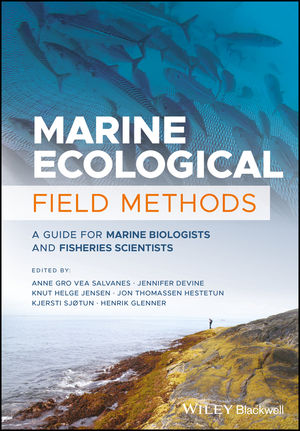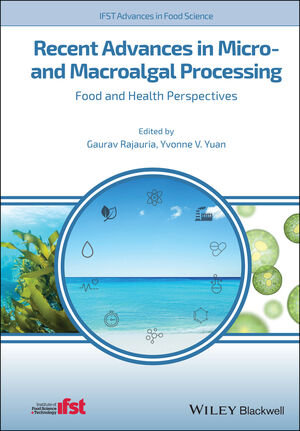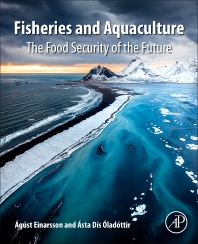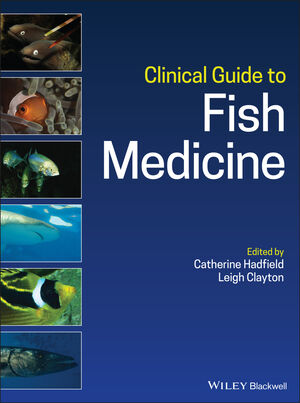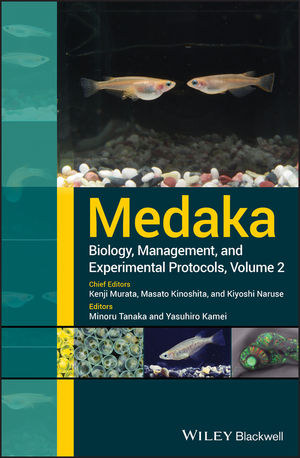
Features
fish welfare
Research
No silver bullet against sea lice
Research continues to investigate new frontiers to combat sea lice in salmon aquaculture.
December 9, 2024 By Matt Jones
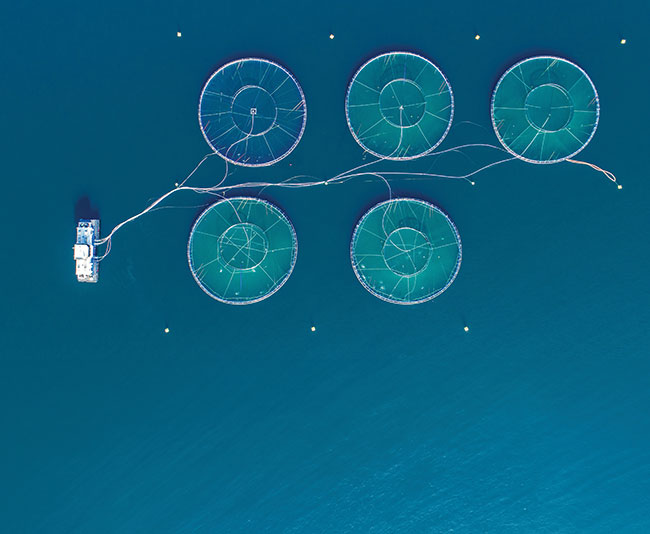 (Photo: mariusltu / Adobe stock)
(Photo: mariusltu / Adobe stock) Sea lice continues to be one of, if not the, most pressing issues facing the aquaculture industry.
Kari Olli Helgesen of the Norwegian Veterinary Institute conducts a yearly survey as part of their annual Fish Health Report.
“We ask fish health personnel working in fish health companies, the industry or authorities, to rank what they think is most important,” says Helgesen. “And every year, sea lice comes up on top or as one of the top issues for both salmon and rainbow trout.”
With that being the case, developing new sea lice treatments remains a key priority for the industry. But where are researchers and academics in the aquaculture sector currently focused in the fight to develop new sea lice treatments?
Vaccines and genetic editing
Helgesen notes that there has been ongoing research looking at the possibility of developing sea lice vaccines for many years. However, she is unsure if they will succeed as previous attempts at developing an ectoparasite vaccine have proven extremely difficult.
“If they succeed, that would be a truly novel approach,” says Helgesen. “Another novel approach, though I don’t know how realistic it is to use it, is CRISPR technology for genetic editing. Several Pacific salmon species are more resistant to sea lice than Atlantic salmon, so there might be a possibility there. There has been a project looking into reasons why Pacific salmon are more resistant, and I don’t know if they moved as far as trying to create genetically edited Atlantic salmon.”
That research will likely be conducted in places other than Norway, however, since Norwegian regulations don’t allow the production of any genetically modified organisms.
Cleaner fish
One avenue that is still being explored is the possibility of using other species of fish such as lumpfish that would consume the sea lice off the salmon. This is hardly a new concept – cleaner fish have been used in the European aquaculture industry for decades. However, while the concept of these types of treatments is not new, the details are still being worked out.
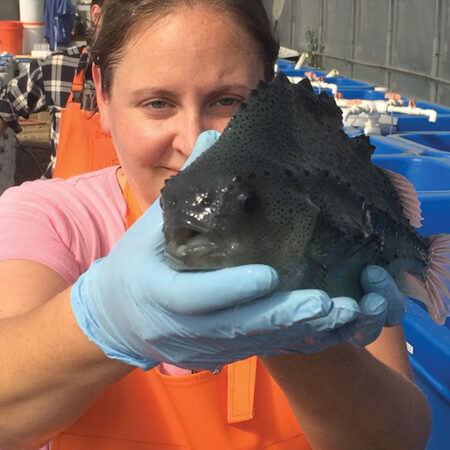
Researchers are looking to species such as lumpfish to replace traditional European cleaner fish species such as the goldsinny Wrasse.
(Photo: U.S. Department of Agriculture)
Lumpfish are held back from reaching their full potential as a treatment simply due to the extreme levels of aggression that they exhibit. It’s not a problem when the lumpfish are interacting with the salmon or the sea lice, but it is a significant problem when rearing lumpfish for that purpose. Elizabeth Fairchild, a research associate professor with the University of New Hampshire and the New Hampshire Agricultural Experiment Station, co-authored a study looking at ways to reduce that aggression.
“It seems to happen mostly when they’re very small juveniles and it lessens as the fish grow out of that phase,” says Fairchild. “But this does affect production. You’re going to be pulling out fish that have been nipped at as they grow – those fins are not going to heal back to what they originally were.”
That aggression could be caused by being raised in captivity in the first place. Lumpfish are not a schooling fish by nature so there has been little research to suggest that such aggression occurs in the wild. As such, the research Fairchild co-authored examined simulating a more natural environment by reducing stocking densities and altering lighting schemes.
“In nature, the little small guys are going to be more up at the surface than down at the bottom, so they’re going to be exposed to a natural light and dark photo period,” says Fairchild. “It’s very unnatural in hatcheries, we’re packing fish in a very dense setting. Industrial food production is much different than natural food production.”
Fairchild’s research found that instances of tail fin nipping as a sign of aggression lessened when the fish had 12 hours of light followed by 12 hours of dark (rather than constant light) and when densities were reduced.
Fisheries biologist, Michael Pietrak, of the United States Department of Agriculture’s National Cold Water Marine Aquaculture Center cautions, however, that such techniques have not been proven in North America as of yet. Researchers are looking for North American wrasse species to replace traditional European cleaner fish species such as the ballan and goldsinny wrasse.
“That’s where lumpfish come in, that’s a wrasse species that is native to this side of the Atlantic,” says Pietrak. “But they have some issues. Wrasse, in general, go into a torpor when the water temperatures start to go below seven or eight degrees Celsius. They’re not really efficient in cold water. They also require about two years in the hatchery before they’re at the right size to stock out to eat sea lice in the pens, so that makes them economically challenging. Whereas lumpfish are incredibly fast growers.”
Pietrak says that the USDA are also examining the use of therapeutic approaches, in particular natural products and compounds, as well as vaccination strategies, though they are still at an exploratory stage.
SAVED
A team of researchers representing Scotland and Norway are currently working on a new benchmark testing tool which could help validate predictions of the dispersion of sea lice. SAVED – Sustainable Aquaculture: Validating Ectoparasite Dispersal (Models) – is designed to validate the results of dispersion models that farmers and regulatory bodies use in their planning. The tool, which will be available for free online, will determine dispersion based on wind and tidal data, light exposure and other factors.
“Different sea lice dispersal models use varying complex mathematical techniques, but it is important to ensure that the same set of input data returns a valid result, not matter which product is used,” Meadhbh Moriarty told Fish Farming Expert. “To reduce the variability, we are creating a bespoke Python script that can be applied to each model and ensure it is fit for purpose.”
New approaches
Helgesen says that, particularly in Norway, chemical sea lice treatments have become a smaller and smaller part of the aquaculturist’s toolbox since around 2016. This move was predicated not just by a desire for more eco-friendly treatments, but also that sea lice were becoming resistant to the previous chemical treatments.

These recently hatched lumpfish could be used someday to eat sea lice off of salmon. (Photo: U.S. Department of Agriculture)
“They were forced to find other solutions,” says Helgesen. “They are more eco-friendly, but they are more expensive and they are worse for fish welfare. So it’s not an obvious choice to move away from effective chemicals, but ineffective chemicals you have to move away from. There are many different answers and it will depend on who you ask what answer you will have. Once the new non-medicinal methods were developed, and they had invested in those types of machines – boats with the capacity to treat a lot of fish – then it was kind of a snowball that had started rolling.”
The main treatments that she sees in use these days are thermic, mechanical and freshwater treatments, including devices that utilize lukewarm water to shock lice off of salmon with the temperature change. These devices can be effective, but there is a question of whether they cause undue stress on the salmon, which can have a panic reaction and injure themselves during the treatment.
“From what I know of, it’s more the methods that will protect the fish from the lice, like physical barriers and closed containers,” says Helgesen. “I think that’s what industry wants to talk about because that will most likely avoid many of the welfare issues also associated with sea lice treatments.”
Those physical barriers include subsurface cages and closed cages with actual walls that the water is pumped in and out of. But the economic case for closed systems is still being proven, so that has not taken a massive foothold in the industry. Until that changes, she sees sea pens remaining the standard in the industry.
No panacea
Pietrak makes one important distinction – none of these techniques are going to be the one solution that finally solves the problem. It’s a wide-ranging and varied industry and solving these problems will require a variety of solutions.
“I strongly believe that sea lice are not going to be managed by any single treatment,” says Pietrak. “There’s no silver bullet out there. It’s going to take some kind of combined strategy in an integrated pest management plan that’s going to have to be tailored for each specific farm. For each company, how they evaluate which set of treatment methods or tools are going to be most effective for them are going to be based on a wide range of factors, including the local environment, the economics and the resources that are available or not.”
